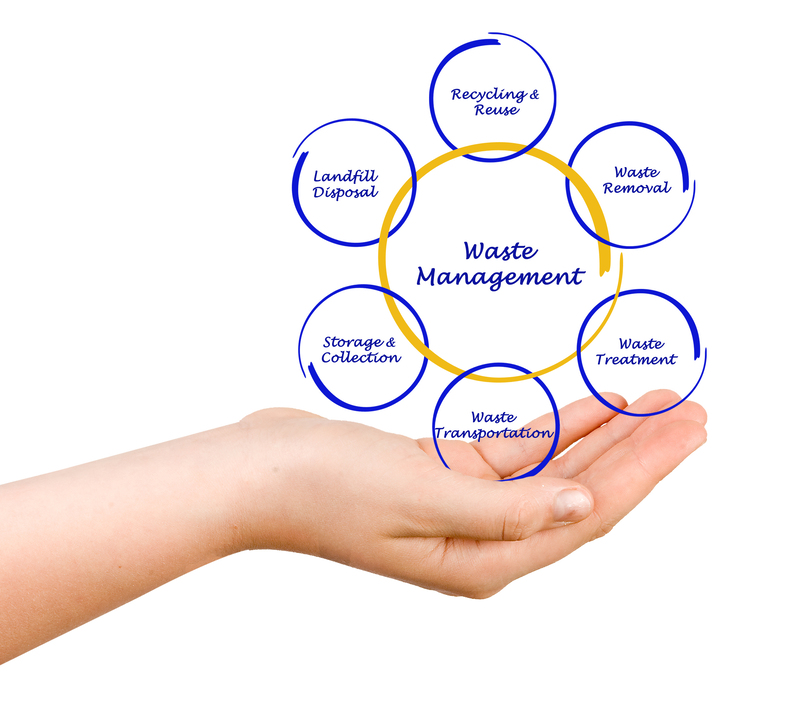Eco-Conscious Plant Pot Disposal Tips: Sustainable Solutions for Every Gardener
With the rising interest in sustainable living, eco-conscious plant pot disposal has emerged as an essential topic for both novice and seasoned gardeners. As we embrace greener lifestyles, understanding how to dispose of or repurpose our old plant pots in environmentally friendly ways is crucial. This comprehensive guide provides actionable, practical eco-friendly plant pot disposal tips to help you reduce your ecological footprint and contribute to a healthier planet.
Understanding the Environmental Impact of Plant Pots
Before diving into eco-friendly plant pot disposal methods, let's explore why it's essential. Plant pots are generally made from a range of materials--plastic, ceramic, terracotta, and biodegradable substances. Each material has its own environmental implications when disposed of improperly. Plastic pots can take centuries to decompose, often ending up in landfills or polluting natural habitats, while ceramic and terracotta pots contribute to landfill mass due to breakage or disuse.
The Problem with Conventional Disposal
- Plastic plant pots are often non-biodegradable and are rarely accepted in municipal recycling streams.
- Ceramic and terracotta pots can break easily, making them hard to reuse or recycle.
- Disposal in landfills adds to environmental degradation and resource waste.
To make a genuine impact, gardeners and plant lovers need mindful, planet-friendly strategies for disposing of unwanted plant pots.

1. Recycle When Possible: Eco-Conscious Approaches
Check Local Recycling Guidelines
Many people assume all plastics are recyclable, but that's not the case for most plastic plant pots. Check the bottom of the pot for recycling codes and verify if your local facility accepts them. Call your city's recycling program or waste management company to inquire about specific rules for plastic plant pot recycling.
- Look for the numbers: Most plastic garden pots are made from polypropylene (#5) or polyethylene (#2) and may be recyclable.
- Prepare pots: Remove all soil and labels. Rinse thoroughly to avoid contamination in the recycling stream.
- Check garden centers: Many nurseries and garden centers offer take-back recycling programs for used pots. Some large retailers, such as Home Depot or Lowe's, have seasonal plant pot recycling bins.
Consider Biodegradable and Compostable Alternatives
The rise of eco-friendly plant pots made from materials like rice hulls, coir, peat, or paper pulp provides gardeners with sustainable alternatives. After use, these plant pots can be composted or left to break down in suitable conditions, drastically reducing waste.
- Composting: Break up biodegradable pots and add them straight to your compost bin.
- Garden beds: Some pots can be planted directly in the soil, where they decompose over time.
2. Reuse and Repurpose: Give Old Plant Pots a New Life
Creative Reuse Ideas for Different Pot Types
Instead of throwing plant pots away, think about how to repurpose plant pots creatively. Both small and large pots offer countless opportunities to reduce waste and save money.
For Plastic Pots:
- Seedling trays: Cut and use shallow pots for starting seedlings.
- Organizers: Use pots for storing craft supplies, garden tools, or small household items.
- Craft projects: Paint, decorate, and transform plastic pots into decorative planters, bird feeders, or hanging baskets.
For Ceramic and Terracotta Pots:
- Mosaic art: Use broken pieces for creating garden mosaics or stepping-stones.
- Pencil holders: Smaller pots make excellent desk organizers.
- Fairy or succulent gardens: Repurpose cracked pots as whimsical fairy gardens or mini succulents displays.
Share or Swap with Fellow Gardeners
If you have an abundance of pots in good condition, organize a plant pot exchange with local gardening clubs or neighbors. Many people need extra pots at planting season, and a swap saves money and resources.
- List pots on community platforms like Craigslist, Freecycle, Facebook Marketplace, or Buy Nothing groups.
- Donate to schools, community gardens, or local horticultural societies.
3. Upcycling for Sustainable Living
Upcycling goes a step beyond simple reuse. It involves transforming old plant pots into entirely new and useful items, blending creativity with sustainability.
Top Upcycling Projects for Used Plant Pots
- Outdoor Lanterns: Turn terracotta pots upside down, cut patterns, and place LED lights underneath for ambient outdoor lighting.
- Bird Baths: Stack larger pots upside down and set a shallow saucer on top for an instant bird bath.
- Garden Decor: Paint or mosaic old pots to use as decorative accents in your landscape.
- Compost Scoops: Cut large plastic pots into scoops for garden compost or soil.
Why Choose Upcycling?
Upcycling reduces landfill waste and environmental impact while offering unique, sustainable plant pot disposal solutions. It can also be a fun and rewarding DIY experience for families and garden enthusiasts alike.
4. Buy Responsibly: Tips for Reducing Plant Pot Waste Up Front
The best way to deal with plant pot disposal sustainably is to prevent waste at the source. Choose pots wisely and look for reusable, recyclable, or compostable options.
- Opt for biodegradable pots when available, especially for seedlings that can go straight into the ground.
- Select durable pots made from recycled materials or reclaimed clay that are designed to last for many seasons.
- Support retailers with take-back or pot return programs.
Check labels and manufacturer sustainability claims before making a purchase. Supporting eco-conscious brands helps drive industry-wide change toward greener products and packaging.
5. Repair Over Replace: Prolong Plant Pot Lifespan
Many plant pots are discarded because of minor damage. Consider repairing before replacing to extend their life and minimize waste.
- Use strong adhesives to fix hairline cracks in ceramic or terracotta pots.
- Seal cracks with waterproof tape or specialty putty for plastic pots.
- Repurpose chipped pots for less visible garden areas or creative landscaping.
6. Community Initiatives and Responsible Disposal
Participate in Local Recycling Drives
Occasionally, municipal recycling programs or community groups organize drives specifically for collecting old garden pots for responsible recycling. These events ensure that plant pots are processed correctly and kept out of landfills.
- Follow local environmental groups for announcements of collection events.
- Bring all types of pots--plastic, ceramic, terracotta--if accepted.
- Spread the word to neighbors and fellow gardeners.
Drop-Off Points and Specialty Recycling Centers
Specialty recycling centers often accept materials that general curbside recycling cannot. Search online for local eco-centers or garden stores with dedicated drop-off points for eco-conscious plant pot disposal.
- Some centers may refurbish and resell pots as affordable options for new growers.
- Others will ensure proper recycling, minimizing environmental harm.
7. Eco-Conscious Disposal of Plant Trays, Tags, and Inserts
Don't forget that seedling trays, plant tags, and plastic inserts often come along with pots. Disposing of these in an environmentally friendly way is just as important.
- Clean and return trays and inserts to participating nurseries.
- Repurpose tags as garden markers for future seasons.
- Recycle according to local guidelines; many are made from the same plastic as pots.

Frequently Asked Questions About Eco-Conscious Plant Pot Disposal
Can I put plant pots in my curbside recycling?
This depends on your location and the type of plastic. Always check your city's guidelines. Many programs do not accept garden pots due to contamination risks, even if they are the right type of plastic.
Are there any alternatives to plastic plant pots?
Yes! Biodegradable pots, unglazed terracotta, and repurposed household containers are all eco-friendly alternatives to plastic plant pots.
What should I do with broken plant pots?
Repurpose broken ceramic and terracotta as drainage material for larger pots, decorative mosaics, or garden edging. For plastics, check if the pieces are recyclable locally; otherwise, see if you can use them in craft or landscaping projects.
How can I encourage others to practice sustainable plant pot disposal?
Lead by example! Share resources, organize neighborhood swaps, and educate your local gardening community.
Conclusion: Making a Positive Environmental Impact
Embracing eco-conscious plant pot disposal tips is an actionable and empowering way for every gardener to step up their commitment to sustainability. Whether you choose to recycle, reuse, donate, upcycle, or buy better from the start, your actions matter. By thinking carefully about the materials you use and how you dispose of them, you'll reduce your ecological footprint and inspire others to do the same.
Remember: Every pot counts. With a small shift in mindset and a few creative strategies, we can all participate in the eco-friendly plant pot movement--helping to ensure that our gardens continue to grow in harmony with the natural world. Let's cultivate a greener future, one plant pot at a time!
- Check your local recycling guidelines before disposing of pots.
- Embrace creative reuse or upcycling to reduce waste.
- Support sustainable brands and encourage community participation.
- Share your eco-conscious practices for greater outreach and impact.
Practice what you pot! With these eco-friendly plant pot disposal tips, you'll not only beautify your garden, but you'll also nurture the planet for generations to come.